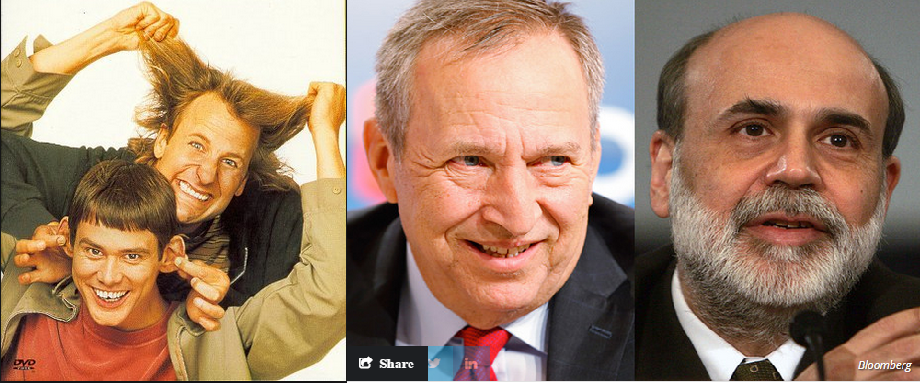MW: April 1, 2015:
One dunce asserts that the U.S. is in a secular stagnation caused by zero interest rates - a problem that can only be resolved with more government spending. This is the Paul Krugman view that 35 years of government deficits can be fixed with even larger government deficits. A counter-cyclical policy of Keynesian fiscal stimulus can fix a secular problem of insufficient demand caused by outsourcing the entire economy.
The other dunce asserts that zero interest rates are succeeding where 1% interest rates failed catastrophically, and everything is getting better right now - you can't make this shit up...
"Does the U.S. economy face secular stagnation? I am skeptical, and the sources of my skepticism go beyond the fact that the U.S. economy looks to be well on the way to full employment today"
In a Real Economy, Supply Is Demand
Both of these academics, who shouldn't be trusted with anything more than a Rubik's Cube, are wrong for essentially the exact same reason: because like all Econo-dunces today, they conveniently separate (developed world) demand from (Third World) supply and then use unlimited amounts of debt to broker the difference. Whereas, in a balanced economy supply = demand. Period. That's the definition of a balanced and sustainable economy.
Here below, we see the graphic illustration of what 35 years of separating demand from supply has led to - zero interest rates (red line) and the lowest manufacturing employment in U.S. history (blue line):
If interest rates could only go lower, the U.S. would be at full Unemployment. Problem solved.


